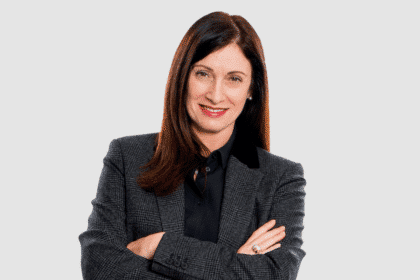Following the launch of the revamped marieclaire.com.au, editor Nicky Briger spoke to Magazine Networks about all it can offer readers.
In September, Pacific Magazines unveiled an all-new digital experience for Marie Claire. Led by design thinking, the new look marieclaire.com.au was crafted to provide a better reader experience across all devices.
It’s a testament to the title’s commitment to digital, and no doubt a necessary step given the brand has seen a 22 per cent uptick in traffic in the past 12 months.
No fact better illustrates the positioning of the title than its two highest traffic days during this period: the election of Donald Trump and the fashion event of the year, the Met Gala.
“Other brands wouldn’t see such a spike for the election, but our consumers know we’re going to cover those topics,” Briger says.
“This is where the power of the brand is so important online and how online can help the brand.”
The combination of digital and print at Marie Claire is, in Briger’s words, a seamless operation.
While other publications may have separate digital and print divisions, at Marie Claire the two go together hand in hand, or as Briger puts it, “hand in glove”. According to the editor, this allows better control of the content and ensures output stays on brand.
For all magazines, digital has brought with it both extended space and opportunity. While print dictates a finite amount of room for content, now, the sky is the limit.
On an average day, the Marie Claire team creates between 20 and 40 pieces of content. The scale and nature of the output require people to be jacks of all trades.
“Nobody is just doing one job anymore – they’re doing so much more,” Briger says. “We’re developing revenue ideas, producing video content, writing. Sometimes I’m storyboarding for video. I have to stop and ask myself when I became Francis Ford Coppola.”
While Marie Claire is clearly seeing success online, Briger says print still has its place.
From an audience perspective, there is significant overlap between the digital and print product with online reaching women aged 25 to 35, while print readers typically range between 30 and 45.
Briger empathises with the busy lives of her readers and sees print as the perfect escape.
“It’s hard to disconnect and put that phone down. If I can sit down on a plane and read, it’s such a great joy,” she tells Magazine Networks.
“Opening a magazine and seeing an incredible photo in gloss is so much more memorable than seeing it online.”
When she’s not pouring over titles from the Pacific Magazine stable, she confesses to having a penchant for Vanity Fair.
A career in magazines
Briger got her start in newspapers where she completed a cadetship. Her first magazine job was at celebrity title NW before moving across to Marie Claire, where she began as a sub-editor on the magazine’s 1995 launch issue.
She would go on to work for a slew of other brands such as In Style and She, before coming full circle and returning to Marie Claire to sit in the editor’s chair two years ago.
While she has thoroughly enjoyed her career to date, Marie Claire is home for Briger.
“I’ve loved it all, but Marie Claire is my favourite because you get that fashion, but you’ve also got the fantastic journalism – more provocative stories and stories about the world,” she says.
Still, the changing nature of the work is keeping her on her toes. Briger sees the industry as having shifted more in the last 18 months than in the last 25 years.
As such, she says the days of building a five-year editorial plan are long gone.
“It’s a waste of time. What’s the point when you’re going to rip it up and start again?” she says.
Championing social justice
A unique feature of the Marie Claire brand is its focus on championing social causes. Past campaigns have addressed a range of issues including domestic violence, child abuse and ovarian cancer.
In the days before digital, these campaigns would play out across multiple pages in print, but today they live on social media.
One example is the magazine’s campaign to highlight how Australia is lagging behind the rest of the world when it comes to childcare services.
The campaign, created by the Marie Claire team, generated more than 3.8 million views on Facebook alone.
“It absolutely got the message across and probably reached more people. Our campaigns have a whole new life online,” she says.
Marie Claire has also been promoting marriage equality with the ‘Until We All Belong’ campaign, produced in collaboration with Airbnb.
The campaign called on celebrities including Jessica Marais and Asher Keddie, with assets shared on the high-profile women’s own Instagram and Facebook pages.
“We’re always looking for the right issue that’s going to spark a response,” Briger says.








